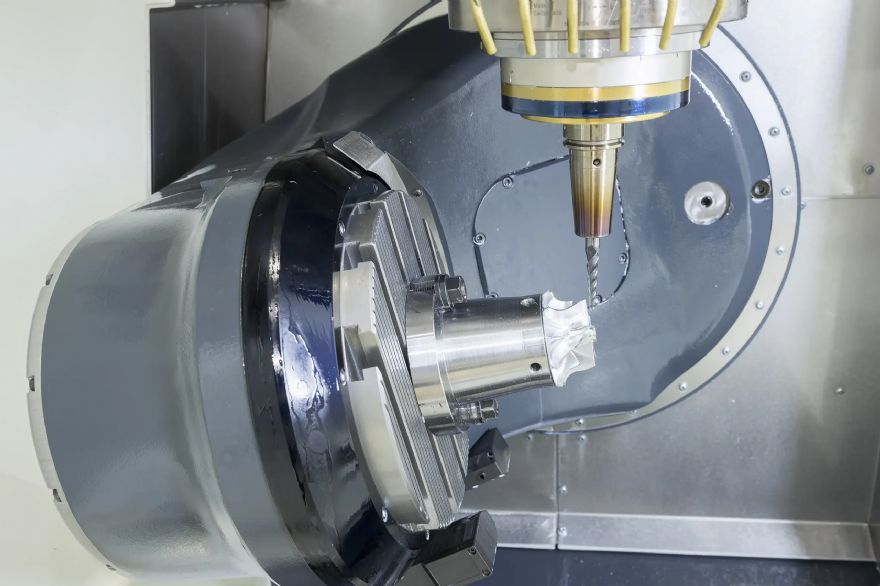
Five-axis machining may resemble conventional milling at first glance, but its true complexity reveals itself during initial programming. However, once mastered, it becomes a truly transformative capability in precision manufacturing.
Unlike three-axis systems that operate along the X, Y, and Z axes, five-axis machines introduce rotational movement, enabling access to intricate geometries and reducing set ups. Trunnion-style machines rotate the table, ideal for heavy parts, while swivel-head configurations move the spindle around a fixed workpiece, offering flexibility at the cost of programming complexity. The location of the machine’s pivot point plays a critical role in programming accuracy, often causing discrepancies between simulation and actual output.
Tool orientation is central to success. Lead angles of 15–20deg are preferred for roughing to manage heat and extend tool life, while finishing operations benefit from reduced angles around 5–10deg. Tilt angles must be carefully chosen — too much causes chatter, too little wastes capability.
Meanwhile, dynamic orientation, where the CAM system adjusts tool angles in real time, has revolutionised surface finish consistency. Collision avoidance begins in the CAM environment but must be validated with full machine simulation. A 5mm safety buffer around fixtures is standard practice.
Singularities, where rotary axes align unfavourably, can cause erratic movements and should be avoided or stabilised using axis clamping. Complete modeling of the workholding setup, including clamps and screws, is essential to prevent interference. The post-processor, translating CAM data to machine code, must be finely tuned. Trunnion machines rotate the coordinate system with the table, while head-tilt machines keep it fixed. Testing post-processor output with simple programs before full production is advised.
Multi-axis toolpaths and simulationsSynchronisation of linear and rotary axes is vital, especially on older controls that lack automatic blending. Feed rate management is another challenge — rotary motion affects actual cutting speed, and inverse time feed rates help maintain consistency. Advanced
CAD and CAM software is indispensable for generating accurate multi-axis toolpaths and simulations.
Surface quality in five-axis machining depends on smooth toolpaths and consistent chip loads. Abrupt changes in direction leave witness marks, and scallop height varies with tool orientation. Constant Z-level strategies often outperform spiral morphing on complex surfaces. Cutting parameters must be adjusted for each orientation, as effective tool diameter changes with angle. Common mistakes include over-reliance on 3+2 programming when continuous five-axis would yield better results, ignoring machine dynamics, poor part orientation, inadequate simulation, and neglecting chip evacuation.
Each of these can compromise performance and safety. Success in five-axis programming demands patience, methodical planning, and a willingness to learn from experience. With careful setup, optimised strategies, and robust verification, the full potential of five-axis machining can be realised. It is worth noting that every expert started as a beginner — what matters is persistence and a commitment to precision.